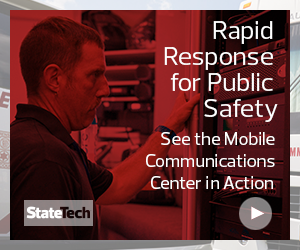By moving to the cloud with Salesforce’s Einstein Service Cloud, Knight-Fields and her team realized significant gains. The agency cut training time for new 311 agents in half, shaved 21 seconds off the average call time and increased first-call resolution from 46 percent to 60 percent.
MORE FROM STATETECH: Discover why Verizon has launched a 5G lab for first responders.
San Jose Beefs Up Its 311 Capabilities
San Jose, Calif., took a significant step forward by implementing Oracle Service Cloud and Oracle Integration Cloud Service as the foundation for its 311 and digital front door services in 2017. Previously, San Jose had only a rudimentary 311 system and very little real-time awareness of service requests from about 1 million residents and more than 80,000 businesses in the heart of Silicon Valley.
“Our mayor and city council had a strong vision. We went from basic call tracking to a digital-services platform — implementing a new and robust 311 system, a new mobile app, a new online portal, direct integration with work systems across the city, and a data layer for analytics in seven months,” says San Jose CIO Rob Lloyd. “In the first three months of use, we saw 17,000 users download the app and engage with us, some in very organized ways.”
After a year and a half, city call center staff now field nearly 500 requests per day.
“We made ourselves much more accessible and increased our workload,” says Desiree Jafferies, the city’s contact center manager. “There are clearly areas to improve. The joke we have is that if you’re in a dark closet and you have a flashlight, do you just leave your flashlight off knowing you have spiders in there? Or do you turn your flashlight on and say, ‘Ah, there’s a spider, let me clean it out’?”
Lloyd adds, “We are working across departments through our new product owner to re-engineer city processes to make services better, more responsive and more efficient. That’s the core digital transformation that truly marks a city that listens.”
_0.jpg)
Put Customer Service at the Heart of 311
Make a fresh start, Philadelphia’s Quinn says, offering advice to his colleagues in other cities pondering a move to the cloud for 311.
“At its core, 311 is customer service. You want the customer to have the easiest path through,” he says.
ICMA’s Fleming expects to see more small cities around the United States adopt cloud-based 311 systems in addition to major metropolises. “Even small communities are going to have to start thinking about how to provide customer service in a way that’s good for constituents,” he says.









_0.jpg)



